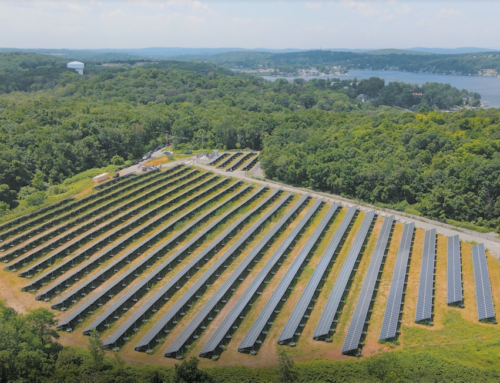500,000 Bitcoin: Michael Saylor’s Secret To Getting Rich
April 2, 2025
Michael Saylor, the visionary behind Strategy (formerly MicroStrategy), has produced two new “strategies” for getting rich on Bitcoin.
His company’s new preferred stock offerings—STRK and STRF—position him to tap into the global fixed-income market, and begin vacuuming it into Bitcoin. It’s a move that could redefine how institutional capital participates in Bitcoin’s ascent to global reserve asset status – and illuminates how real wealth is created for individuals and businesses in the most glaring way imaginable.
The $300 Trillion Opportunity
The fixed-income market represents approximately $300 trillion of global capital—a staggering sum that dwarfs most other asset classes combined.
Traditionally, these investments provide steady, predictable returns through bonds and similar instruments. What Saylor proposes is nothing short of revolutionary: redirecting just one percent of this capital toward Bitcoin through financial instruments that fit within the mandates of institutional fixed-income investors.
“There’s, what, $300 trillion of fixed income? So I want one percent of it,” said Saylor at the Meeting of the Economic Club of New York early last month. “If we raise hundreds of billions, then we’ll buy bitcoin with it. We’ll have five hundred billion [dollars]
of bitcoin… and our goal will be to keep growing at 20% a year.”
The genius of Saylor’s approach lies in its elegant simplicity. By offering a 10% annual yield through STRF (a perpetual fixed-income product), he’s created an attractive alternative to conventional bonds that often struggle to beat inflation. This yield significantly outpaces what most fixed-income investors can achieve elsewhere in today’s market.
Minimal Risk, Maximum Opportunity
Critics may question Saylor’s strategy, but the risk profile is surprisingly favorable. Unlike leveraged positions that can face liquidation during market downturns, Strategy’s approach eliminates this risk vector. The company is essentially betting that Bitcoin’s long-term appreciation will substantially exceed the 10% annual payments to bondholders.
Even if Bitcoin experiences consecutive down years—which history suggests is unlikely over extended periods—the structure remains viable. Saylor is fundamentally arbitraging the difference between Bitcoin’s historical returns (approximately 65% annualized over the past five years) and the 10% fixed payments. This spread provides a substantial buffer against market volatility.
Saylor’s latest through STRF acquired his company over $700 million, all of which has been deployed into BTC.
The Real Strategy: Don’t Hold Cash
Underlying all of Saylor’s machinations is a fundamental truth that applies to both institutional investors and individuals: holding cash is a guaranteed path to wealth erosion. With inflation consistently degrading purchasing power, uninvested capital steadily loses value year after year.
More to the point, Robert Kiyosaki’s classic advice for creating life-changing wealth applies: don’t get out of debt, but get into debt – because being invested in productive assets is paramount. Whether through the NASDAQ, S&P 500, or bitcoin, the principle remains consistent: time in the market beats timing the market, and patience transforms modest capital into substantial wealth.
Saylor’s institutional strategy may seem complex on the surface, but its underlying principles apply universally. The real innovation isn’t just in financial engineering—it’s in creating pathways for capital to flow from traditional markets into what may be the fastest-appreciating asset of our lifetime.
The Simple Path to Wealth
The most profound insight in Saylor’s approach is that building substantial wealth isn’t necessarily complicated—it just requires patience and consistency. The power of compound growth transforms even modest investments into significant sums over time.
A $100,000 investment in the S&P 500, which has historically returned about 6% annually after inflation, grows to approximately $3.3 million in real terms over 60 years. This isn’t get-rich-quick speculation; it’s mathematical certainty playing out over decades.
What Bitcoin potentially offers is an acceleration of this timeline. The same principles apply, but the higher growth rate could compress generational wealth creation into a single lifetime.
The Zoomers’ Advantage
Perhaps the most compelling aspect of Saylor’s vision extends beyond institutional strategy to the generational wealth implications. Despite popular narrative suggesting that Millennials and Gen Z face unprecedented economic headwinds due to the exorbitant costs of housing today, bitcoin presents an opportunity that arguably exceeds what Baby Boomers experienced with real estate.
Consider this: while Boomers benefited tremendously from real estate appreciation (roughly 4.27% annual returns after inflation over the past century), a $100,000 investment in the NASDAQ with its 8% real returns would yield approximately $10 million over 60 years.
The same investment in bitcoin – even assuming its growth rate moderates significantly from historical levels to just 15% – could theoretically generate returns exceeding $400 million in real terms.
We are very, very lucky to have this opportunity. Yet some of us are keeping our money in cash.
Search
RECENT PRESS RELEASES
Related Post



